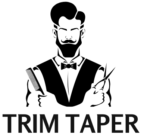Table of Contents
The Temple Fade is one of the best haircuts that is a mix of classic and modern look. Having stunning and clear lines, while offering different variations for styling, Temple Fade is one of the choices men like to make. This guide will learn about the temple fade, its features, how to acquire the hair cut and how to maintain it since it is modern and classy.
Introduction: Discover the Temple Fade

Definition and Overview of the Temple Fade
Temple Fade is one of a kind haircuts where the bald fade initiates at the temples then merges with the hair at the crown. I was given this style to name, it creates a smooth flow and highlights the temples offering a neater finish. This is a multipurpose hairstyle that can suit all types of hair and at all times, it is popular among those who want to achieve a modern and sharp look.
Historical Evolution and Popularity Surge
Like most complicated hairdos, the Temple Fade has its origin from the fade haircuts but has taken a different twist altogether. The Temple Fade was probably first famous from barbers and hairstyles of the 1990s and it became famous again in recent years. Because of its flexibility and the neat appearance, it has become a favorite among men who wish to combine style and tradition.
Why the Temple Fade is a Top Choice for Men
The Temple Fade’s versatility is the secret weapon: it works with virtually any hot hair style and offers a neat appearance additionally. The most distinctive attribute – the fade beginning at tempes – outlines a clear line which also adds a note of the contemporary. In particular, it is suitable for different facial features and hair structures, so it is suitable for most men.
Unpacking the Temple Fade Haircut
Key Characteristics of the Temple Fade
- Subtle Fade: It starts from the temporal regions and decreases as it progresses toward the sides.
- Clean Lines: The link between the two faded and the longer sections is effective and well defined.
- Versatility: Is best used with different types of hair at the top of the head from a short crop to longer hair.
How the Temple Fade Differs from Other Fade Styles
Some of the other fade styles include the regular fade where a fade touches almost every part of the head and the current styles are set off from the temple. This leads to formation of a curve that is unique to the shape of the head. On the other hand, low, mid and high fades situate their fade lines at different positions on the head, fade ranges from a simple drop to blending.
Mastering the Temple Fade: A Step-by-Step Guide
Detailed Instructions for Barbers
- Preparation: The initial process involves the washing and combing of the hair of the client to make sure that it is tangle free and to look at the hair pattern given.
- Creating the Fade Line: State where exactly the face fades at the temples. First, use clippers with the purpose of trimming the hair along an ideal line, shaped according to the curve of the head.
- Blending: Slowly mix the hair at the temples with that on the top of the head with shorter hair. A more precise and gradual way is to use a hair clipper outfitted with interchangeable blades guards. Emphasis should be on diluting the fade line which makes sure that there are no unequivocal line of demarcation.
- Detail Work: Now clean up around the fade by erasing any disjointed features or rather sharp edges. In this step there is a lot of detailing so as to get a very good integration of the fade with the longer hair.
- Finishing Touches: As often as necessary this phase of the tonian hair must be trimmed and styled in accordance to the hair on top. Cut your hair with scissors that will give a clean cut and style them with the products that you want.
Essential Tools and Products for a Perfect Cut
- Clippers: For the first time cutting and fading.
- Trimmers: They are best suited to detailed work and rework which appears let in tight lines.
- Scissors: For blending and other causes of top-trimming.
- Combs: For styling hair and cutting because one has to be meticulous in handling hairs to give the desired look.
- Styling Products: For instance when one needs a hair on top, to style and fix he or she uses pomades or gels just to mention but a few.
Techniques for Achieving a Clean and Defined Temple Fade
When doing a Temple Fade, make sure the fading is sharp and clean, this is especially important if you are going for a defined Temple Fade. They should also ensure that the position of shapes is symmetrical and then adjust it if it is not. Especially pay attention and be more precise with the texture when there are any irregularities in the haircut and carry on with smoothing out the fade. A lot of emphasis needs to be laid in terms of styling and execution in the context of a Temple Fade if one wants to achieve a perfect professional touch.
Choosing the Right Temple Fade for Your Face Shape
Recommendations Based on Different Face Shapes
- Round Face: Opt for a higher fade that elongates the face and adds definition. A Temple Fade with more volume on top can help balance a round face shape.
- Square Face: A medium Temple Fade with a softer transition complements the strong jawline and adds a touch of sophistication.
- Oval Face: Most Temple Fade styles suit an oval face, allowing for versatility in hair length and styling.
- Heart-Shaped Face: A low Temple Fade with longer hair on top can balance the narrower chin and wider forehead.
How the Temple Fade Enhances Various Looks
The Temple Fade enhances different looks by adding definition and sharpness.For instance, the Temple Fade with a textured top will give you a cool; dare I say edgy vibe while slicking your hair back with the Temple Fade will give you a classic; yes sophisticated look. Customizing the fade to suit personal style can help achieve the desired effect.
Maintenance and Styling Tips for the Temple Fade
Daily Care Routine to Keep Your Temple Fade Fresh
Maintaining a Temple Fade requires regular trims to keep the fade sharp and clean. Ideally, it is advisable to do this in a space of 4-6 weeks as this will make the touch up stand out. But also pay attention to the hair and wash it and condition it properly on a regular basis.
List of Hair Accessories for Achieving Best Look
- Pomades or Waxes: For a strong hold and added shine.
- Texturizing Sprays: To enhance volume and texture.
- Conditioners: To keep the hair healthy and manageable.
Tips for Keeping Your Temple Fade Looking Sharp
To keep the Temple Fade looking sharp, use a small amount of product to style the hair on top. Regularly comb and trim as needed, and consider adjusting the style based on seasonal trends or personal preference. Proper styling and maintenance will ensure your Temple Fade remains fresh and well-groomed.
Check Out: Drop Fade Haircut: Classic Style with Modern Flair.
Popular Variations of the Temple Fade

Low Temple Fade
The Low Temple Fade concentrates on a beginning above the temples and slowly fades to the rest of the hair that is left in the head, especially on the crown. This style is perfect for those that cannot go all the way with fades but want something a little fancier than a simple line up.
Mid Temple Fade
One such example is the Mid Temple Fade where the fade is initiated approximately in the middle of the head and is not too extreme yet it is not conservative either. That is why it gives an opportunity to choose a hair pattern that will be suitable for different types of hairdos.
High Temple Fade
The High Temple Fade has a more pronounced fade, starting higher on the head and curving sharply downwards. This style creates a dramatic effect and works well with shorter hair on top.
Celebrity Inspirations: Temple Fade Looks to Admire
Several celebrities have popularized the Temple Fade, showcasing its versatility and appeal. Notable figures like Drake, Usher, and Jidenna have sported variations of the Temple Fade, each adding their unique twist. For inspiration, look at how these stars combine the Temple Fade with their signature hairstyles.
Conclusion: Embrace the Temple Fade Trend
The Temple Fade is a very classy and trendy hair cut of today with a touch of traditional appeal. It is very versatile and unadorned which makes it to be most preferred by men who are looking forward to spicing up their dressing sense. In the context of key characteristics of the Temple Fade, the mastery of the technique, as well as the maintenance of the style, one can state that it is possible to be genuinely enthusiastic about it and enjoy this work. This hairstyle’s name is suggestive enough, but you can go for a low fade that will blend seamlessly with the rest of your hair or a bald high fade if you dare.
For more details : Click Here.
FAQs About the Temple Fade Haircut
What is the difference between a Temple Fade and a regular Fade?
A Temple Fade features a fade that starts specifically at the temples and gradually blends into the longer hair on top, creating a distinctive curve. In contrast, a regular fade typically has a more uniform transition around the head.
How often should I get a trim to maintain my Temple Fade?
To keep your Temple Fade looking sharp, aim for a trim every 4-6 weeks. Regular touch-ups will help maintain the clean lines and overall appearance.
Can a Temple Fade work with different hair textures?
Yes, the Temple Fade can be done on different hair types which include straight hair, wavy hair and even curly hair. This fade can be worked in different ways with other fabrics to enhance the texture of them also with the style of fabrics.
